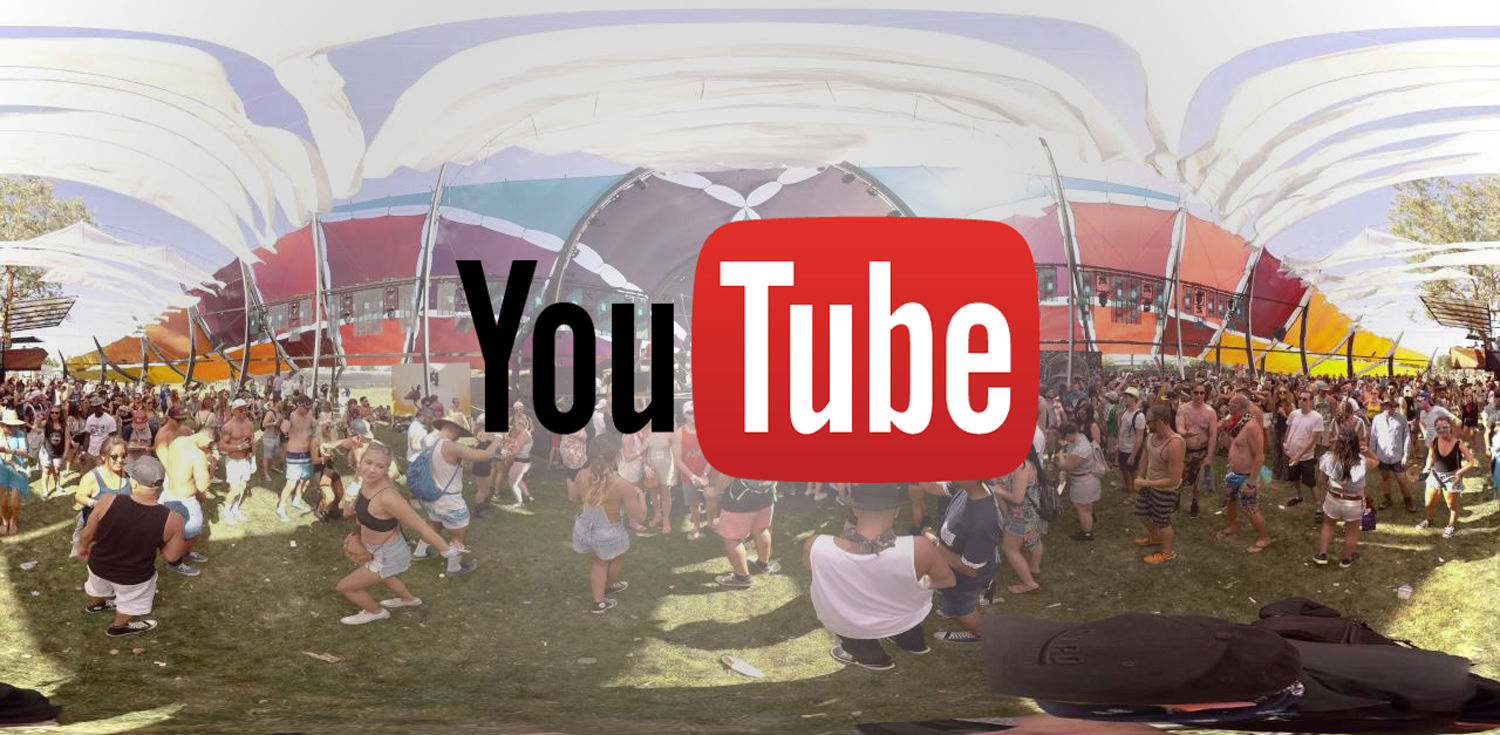When Google first brought the Cardboard to IO in 2014 virtual reality was still just a 20% project, something cooked up in David Coz and Damien Henry’s free time. Two years and more than 5 million cardboard headsets later, Google has turned that project into a full on division and this year at Google IO they seem poised to reveal what their next steps are.
According to sources close to the company, it is suggested that Google will not announce a standalone (meaning without a smartphone) Android VR headset at IO this year – despite multiple reports to the contrary.
Given this development, it seems likely that Google will continue with its mission to make mobile VR accessible to a mass audience through an initiative similar to Cardboard, a cheap headset that piggy backs on the existing Android smartphone ecosystem.
The headset itself will likely be improved from the slab of Cardboard of the first iteration likely, will taking one of two forms: a headset compatible with a large number of Android phones with internal hardware similar to a Gear VR, or (perhaps less likely) a more portable, sturdy edition of Cardboard with all of the optimization handled on the software side.
There are a number of factors that lend credence to this theory, let’s put the pieces of the puzzle together.
Software
Last week a placeholder for Android VR appeared on the Google Play Developer Console and was spotted by Android Police, seeming to confirm that the rumored Android VR ‘OS’ is going to be announced at Google IO. But just what form will that take? The Android N developer preview may have offered some hints.
Earlier this year Ars Technica unearthed a pair of interesting features in the Android N developer preview – including the ability for developers to register apps to be either a “VR Listener” or “VR Helper.” The article’s author, Ron Amadeo, notes that this mode appears to work similarly to the Android’s notification access. If that proves to be the case, likely it means that apps will be able to both push a notification which triggers a VR viewing mode (i.e. ‘Check out this epic 360 video of kittens!’) as well as notifications from your phone within that VR mode (i.e. a message from your friend saying “how about those adorable kitties?”).
My guess is this will be very similar to how the Gear VR’s Home works. You launch into a VR mode (in the Gear’s case by plugging the phone into the headset) and from there are able to launch apps, view content, and receive notifications from the outside world. However on the Gear VR you can’t really do anything actionable with those notifications, I have to take my headset off to answer a text – for example. Given that this will be built on top of Android, I would bet you will probably be able to answer texts and emails (just to get started) without leaving the VR viewing mode.
Amadeo goes on in his article to point out a hardware support flag called “config_sustainedPerfomanceModeSupported” which seems to suggest a potential performance mode option for phones that would help, as he says, “change the SoC’s performance mode from a sprinter to a marathon runner, which could benefit gaming and virtual reality.”
Hardware
Many of the signs seem to point to the solution taking the form of a Gear VR clone, a headset that uses external sensors to help improve and smooth out the experience. It would make sense, as a software optimization that works to offer the same experience on existing phones’ hardware would be incredibly difficult – but then again, Google hasn’t built a large division dedicated solely to VR just to do the easy stuff, they did it to further their mission of putting VR in front of as many people as possible.
Google’s VR product director, Mike Jazayeri, practically spelled this out in a recent feature in WIRED Magazine – from the article:
From the very beginning, Google’s goal has been to get its products in front of as many people as possible. Search was about making it easy for anyone to crawl the entire Internet. YouTube was initially conceived as a much-needed place to store videos online. Chrome was the browser for everyone; Chrome OS the computer for everyone. “That philosophy has kind of been a consistent theme of the best things Google has done,” says Mike Jazayeri, the product director for Google VR, and they planned their VR path the same way.
So it is clear that Google is approaching VR the same way it has approached platforms in the past, with a growth first approach. Get VR in as many hands as possible, as quickly as possible – and a smartphone based approach seems to be the fastest way to do that. Clay Bavor, Google’s VP of VR, told WIRED that was what was so great about Cardboard:
“You don’t need to make a decision about where to go use your smartphone,” Bavor says. “You don’t need to go back into your office or the room you’ve set up for your smartphone to use your smartphone. And you don’t have three cables connecting it to a giant box.” All that is why, even as higher-end, more dedicated VR platforms start to come out, your phone is still the centerpiece of Google’s short-term plans.
With a projected 4.61 billion mobile phone users worldwide (that’s 64% of the world population) it makes sense to create a path for the approximately 80% of those users who operate on Android to jump into VR. Even discounting the percentage of the market that would be operating on a phone whose hardware too old to be considered for VR that is a sizable portion of the global population that could be ushered into the future of VR – the kind of massive impact that is synonymous with Google’s recent ethos.
A Gear VR-like device compatible with the majority of recent, current and future Android phones would provide a sizable impact for sure, but there is definitely a difference in impact between a $99 headset with one million users, and a $15 headset with five million plus. With VR being something you have to see to understand, Google appears to be going for the biggest number of eyeballs possible – and continuing along the thread of the smartphone supported Cardboard ecosystem seems to be the quickest path to the biggest impact.
Beyond the Headset: What Else to Expect from VR at Google IO
The focus of the lead up conversation to IO has mainly been around an impending headset and VR ecosystem, but there are some other things to look out for.
Time to Tango?
Google’s Project Tango has been in the news a lot lately as the platform continues to mature. The first commercial Google Tango enabled phone is set to release in the coming months from Lenovo, and it likely won’t be the last. We may end up hearing about more Tango enabled phones coming at IO, but we aren’t holding our breath for any officially announced support for inside out tracking on mobile. With only one officially announced Tango enabled phone, even if they are technically able to support it, it would fracture the market to a degree – something that runs counterintuitive to Google’s apparent goals. It’s coming, but don’t expect it to be at this year’s IO. That said expect a few really interesting practical uses for Tango to be showcased at the event.
WebVR
After hiring former Mozilla’s former WebVR lead, Josh Carpenter, and showcasing VR running at 90fps in a browser – it appears that Google is taking a much longer look at how the future of the web will look in VR. It is still early, but it seems likely that we may get a look into that future at IO, perhaps even with basic WebVR functionality built into Andriod VR. What would be truly interesting is if Google announced official WebVR support in the next build of Chrome, as current support is only in the beta – Chromium – build of the browser. That would provide a signal to developers around the world that WebVR was something to take seriously.
360 Video Push Continues

A majority of Google’s VR push has been centered around live action video, especially through YouTube. After recenty announcing live streaming 360-degree video support and iOS Cardboard support for YouTube, the logical next step seems to be providing a way for content creators and advertisers to get measurable data from all the videos they are creating. It doesn’t seem like a leap that Google will announce its own 360 video analytics layer for YouTube complete with features like heat mapping at IO. This will definitely be an interesting thing to watch for.
There are still a lot of questions heading into Google IO – but the good news is we will have all the answers for you soon. UploadVR will be at the show bringing you news and analysis on all of the major developments in a show that could prove to be full of major moments for the industry.



























